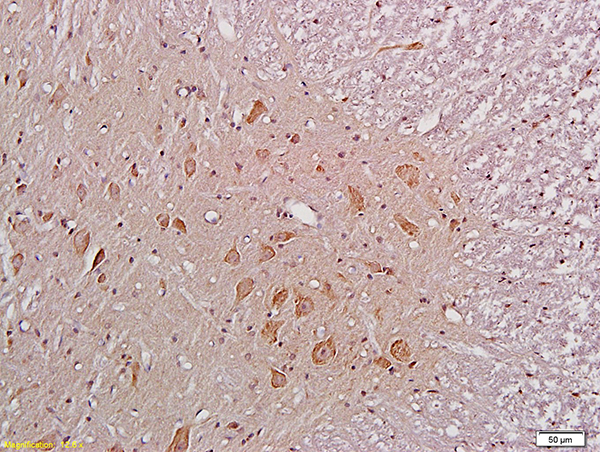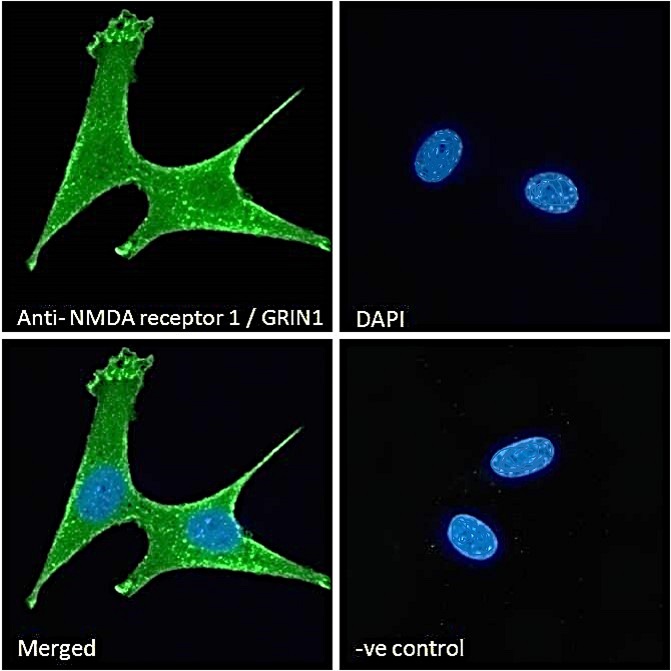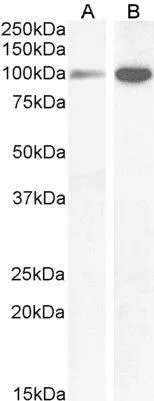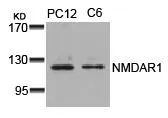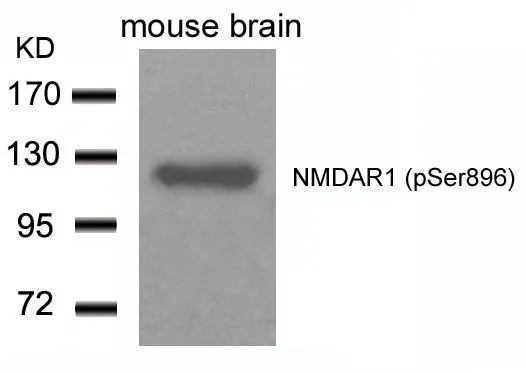
WB analysis of extracts from mouse brain tissue using GTX50168 NMDAR1 (phospho Ser896) antibody.
NMDAR1 (phospho Ser896) antibody
GTX50168
ApplicationsWestern Blot
Product group Antibodies
ReactivityHuman, Mouse
TargetGRIN1
Overview
- SupplierGeneTex
- Product NameNMDAR1 (phospho Ser896) antibody
- Delivery Days Customer9
- Application Supplier NoteWB: 1:500-1:1000. *Optimal dilutions/concentrations should be determined by the researcher.Not tested in other applications.
- ApplicationsWestern Blot
- CertificationResearch Use Only
- ClonalityPolyclonal
- Concentration1 mg/ml
- ConjugateUnconjugated
- Gene ID2902
- Target nameGRIN1
- Target descriptionglutamate ionotropic receptor NMDA type subunit 1
- Target synonymsDEE101, GluN1, MRD8, NDHMSD, NDHMSR, NMD-R1, NMDA1, NMDAR1, NR1, hNR1, glutamate receptor ionotropic, NMDA 1, N-methyl-D-aspartate receptor channel, subunit zeta-1, N-methyl-D-aspartate receptor subunit NR1, glutamate [NMDA] receptor subunit zeta-1, glutamate receptor, ionotropic, N-methyl D-aspartate 1, putative NMDtranscript(altAcc_e2)
- HostRabbit
- IsotypeIgG
- Protein IDQ05586
- Protein NameGlutamate receptor ionotropic, NMDA 1
- Scientific DescriptionThe protein encoded by this gene is a critical subunit of N-methyl-D-aspartate receptors, members of the glutamate receptor channel superfamily which are heteromeric protein complexes with multiple subunits arranged to form a ligand-gated ion channel. These subunits play a key role in the plasticity of synapses, which is believed to underlie memory and learning. Cell-specific factors are thought to control expression of different isoforms, possibly contributing to the functional diversity of the subunits. Alternatively spliced transcript variants have been described. [provided by RefSeq, Jul 2008]
- ReactivityHuman, Mouse
- Storage Instruction-20°C or -80°C,2°C to 8°C
- UNSPSC12352203

